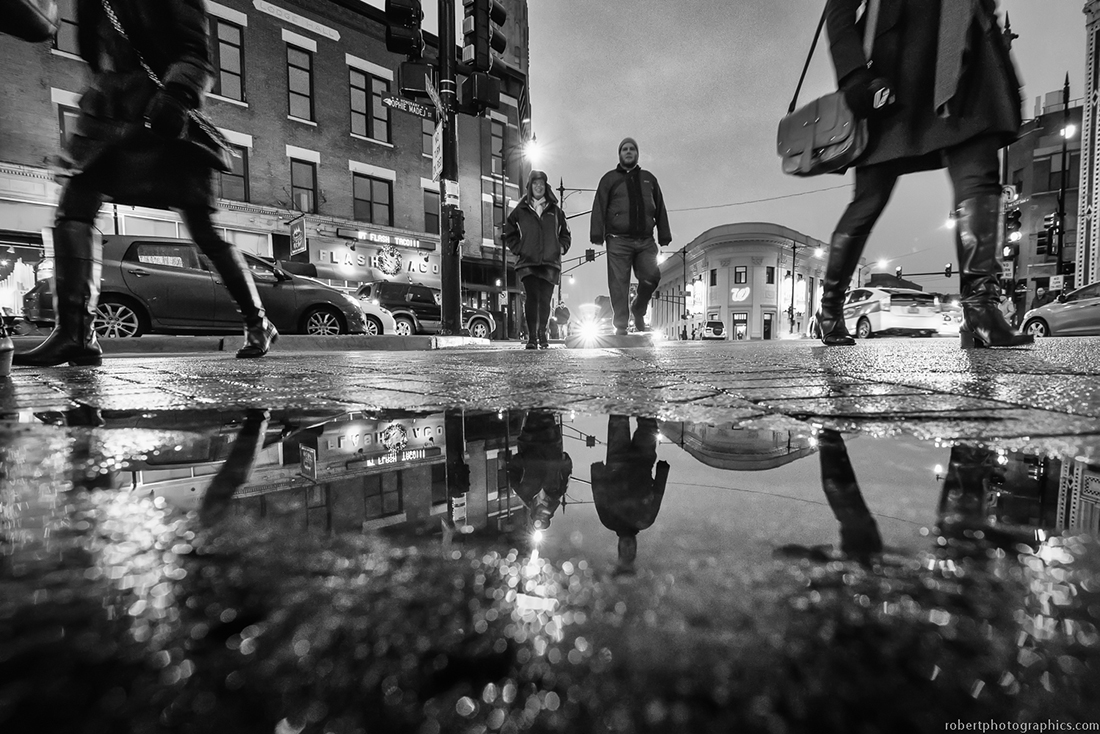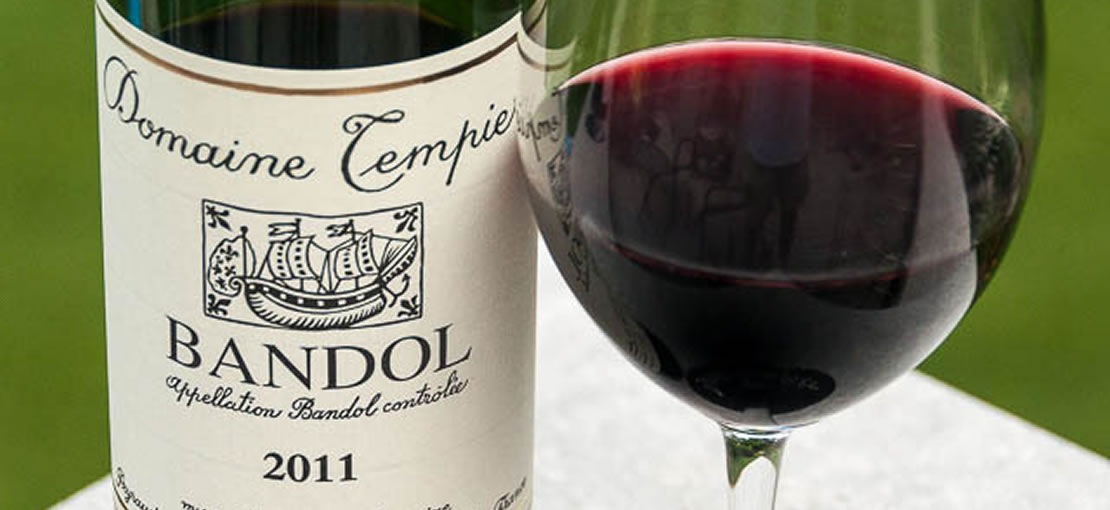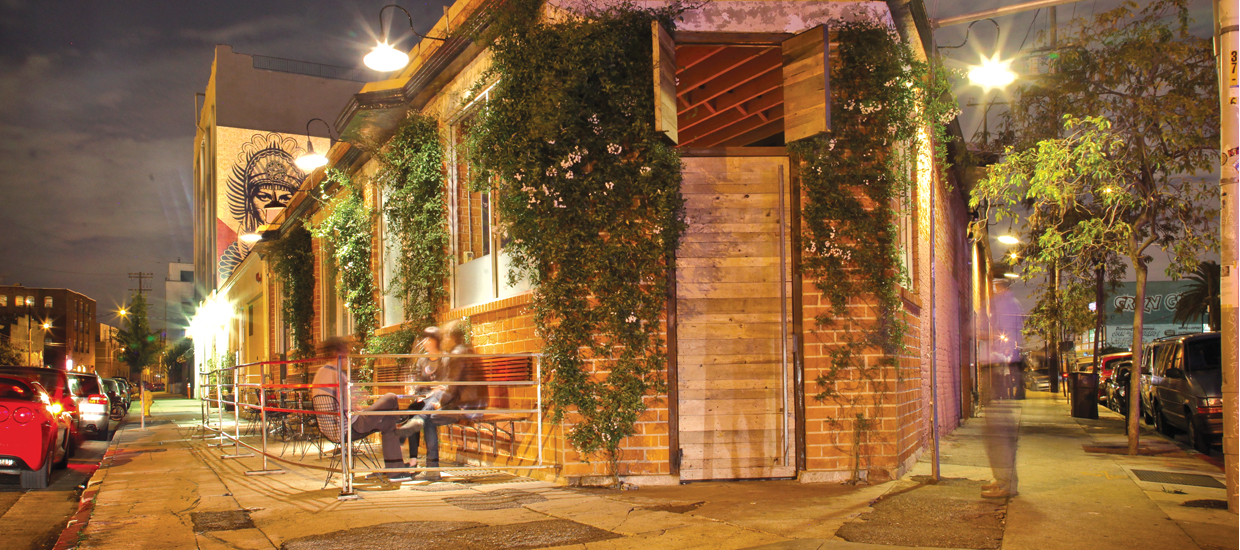By Kara Silva
Artists, eccentrics and seekers of the esoteric converge in Wicker Park, a northwestern Chicago neighborhood well served by chic boutiques, forward-thinking galleries, trendy restaurants, niche bars, a vanguard music and theater scene, and convenient public transportation (CTA’s Blue Line). The dividing line of Wicker Park blurs with that of neighboring Bucktown to the north, as the two share eastern and western boundaries—Ashland Avenue and the Kennedy Expressway to the east and Western Avenue to the west—while Division Street defines the southern edge of Wicker Park.
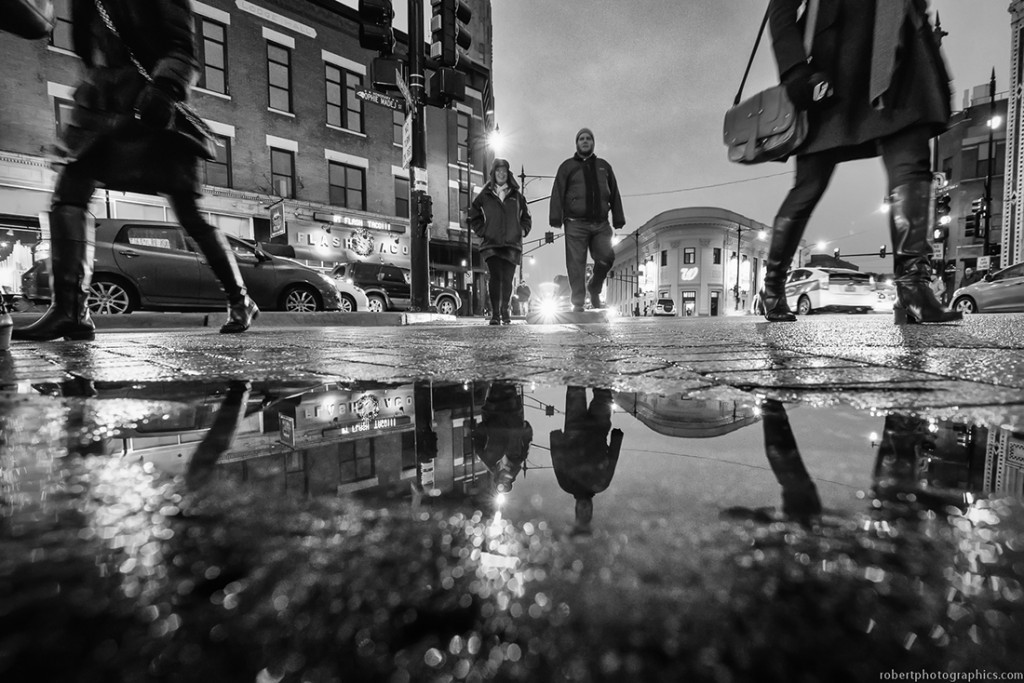
“This is a great kind of growing and developing neighborhood,” says Wicker Park resident and Chamber of Commerce Executive Director Erik Harmon, adding that the new businesses opening in the neighborhood in the last decade have accelerated its growth. “There’s a long history of arts and a little bit of an interesting and different flavor here that you don’t get in other [Chicago] neighborhoods.”
The textured history of Wicker Park has allowed the growing locale to maintain its culturally rich character, illustrated by a melting pot of people, places and ideologies that bring forth a contemporary cool all its own. The neighborhood has experienced waves of progress and decline since Chicago’s incorporation as a city in 1837, and served as a place to rebuild after the Great Chicago Fire of 1871. Initially a prosperous location built by working-class immigrants, remnants of a booming past are visible along the historic Hoyne Avenue—formerly known as “Beer Baron Row”—which is dotted with mansions of the German brewing titans of the time.
The stock market crash of 1929 led to a period of decline, however, which continued into the 1970s after the gentrification of other neighborhoods landed displaced residents in Wicker Park. But it wasn’t too long before it began to attract artists and young professionals, who would begin Wicker Park’s eventual transformation into the alternative urban bohemia it is today.
Read on for Bespoke Concierge Magazine’s top for reasons to add Wicker Park to your travel bucket list:
1. Arts are aplenty
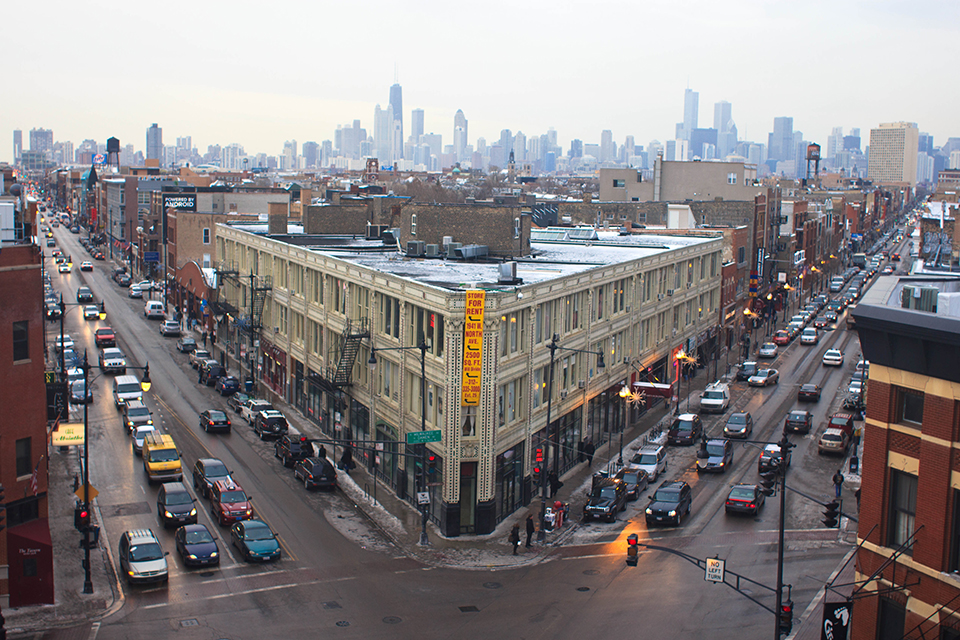
At the center of the locale, the Flatiron Arts Building paints a picture of the area’s propensity for the arts. The triangular building has served as an artists’ collective since 1912 and is one of Wicker Park’s iconic constructions, housing painters, poets, filmmakers, tattoo artists, costume designers, sculptors and other artists. The public is encouraged to explore two floors of workspaces and view impromptu performances, especially on the first Friday of every month from 6-10 p.m., when the studios are opened to the public.
Other facets of the arts are well represented in Wicker Park: Various niche galleries dot the area; Double Door caters to the musically inclined; and the unique theater scene is epitomized in Chopin Theatre. For the last 25 years, Chopin has been one of the most active art centers in the area, producing more than 500 theater, literary, music, film and social events a year. The experimental center also encourages cultural collaboration, with many of its own productions finding roots in Eastern Europe. Its stages have also played host to performers from more than 40 countries.
2. Drinks are diverse
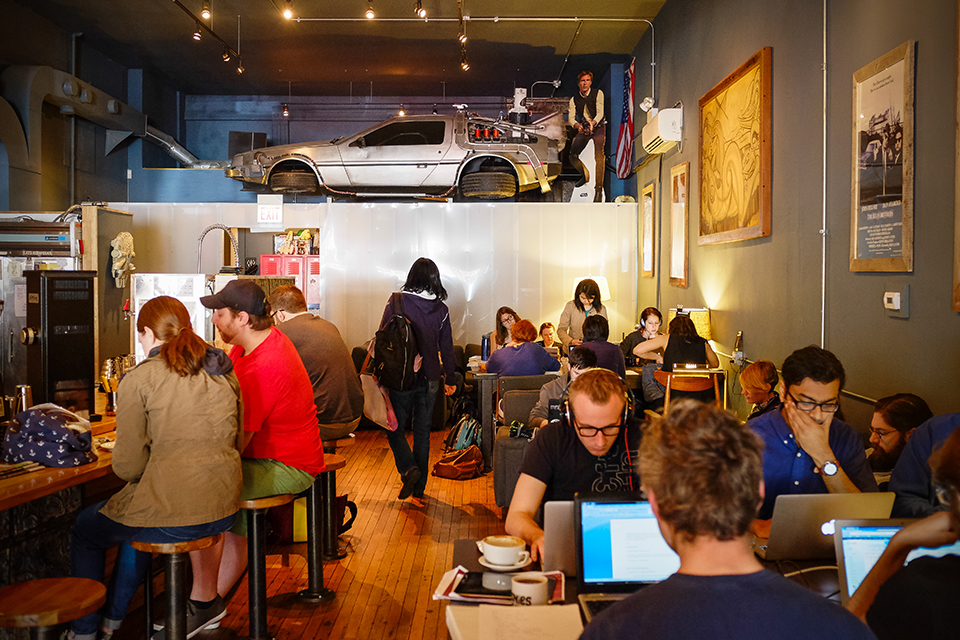
An outpouring of boutique coffee shops, antiquated dives, tasteful hot spots and casual craft beer bars decorate Damen, Milwaukee and Division avenues.
Capture a sense of Wicker Park’s prevailing nostalgia at The Wormhole Coffee. Taking visitors “Back to the Future,” a DeLorean hanging in the rear of the enclave provides an anchor to the relaxed 1980s theme. Beyond a place to reminisce in childhood memorabilia and three-decades-old movie posters, The Wormhole serves pours from its sister business, HalfWit Coffee Roasters, a small-batch roasting company.
As the sun sets in Wicker Park, its youthful energy perseveres with a humming cache of watering holes. For more immersion in the 1980s, Emporium Arcade Bar combines whiskey and craft brews with retro games. Visitors can channel their inner child with arcade relics like Frogger, Donkey Kong, Asteroids and Pac-Man, or try their hand at becoming Emporium’s next pinball wizard.
Meanwhile, the clandestine cocktail lounge The Violet Hour is a mixology mecca with the allure of a sophisticated speakeasy. Its lack of signage creates a tinge of mystery, which continues throughout the refined interior. Though named after a line in T.S. Eliot’s “The Waste Land,” The Violet Hour’s confines make it look as if it were plucked from the pages of “Alice in Wonderland.” When it comes to the offerings, a sustenance menu features small bites like smoked shrimp tea sandwiches and stuffed dates, while bartenders put an inordinate amount of detail into each cocktail. Think outside the box for a drink order—like potable bitters—with options such as The Rabbit Hole, made with Letherbee Fernet, Fernet-Branca, lemon and strawberry syrup.
Not just creative cocktails, Wicker Park has a healthy hold on craft beer, citing a plethora of hip places to sample Midwestern brews. One of which, the seven-barrel brew house known as Piece Brewery and Pizzeria, wields award-winning microbrews and New Haven-style thin crust pizza in a loft-like space. Piece also supplies its sister establishment, Brobagel—located next door—with spent grain to make the aptly named beer bagel.
3. Locals pay homage to vintage and vinyl
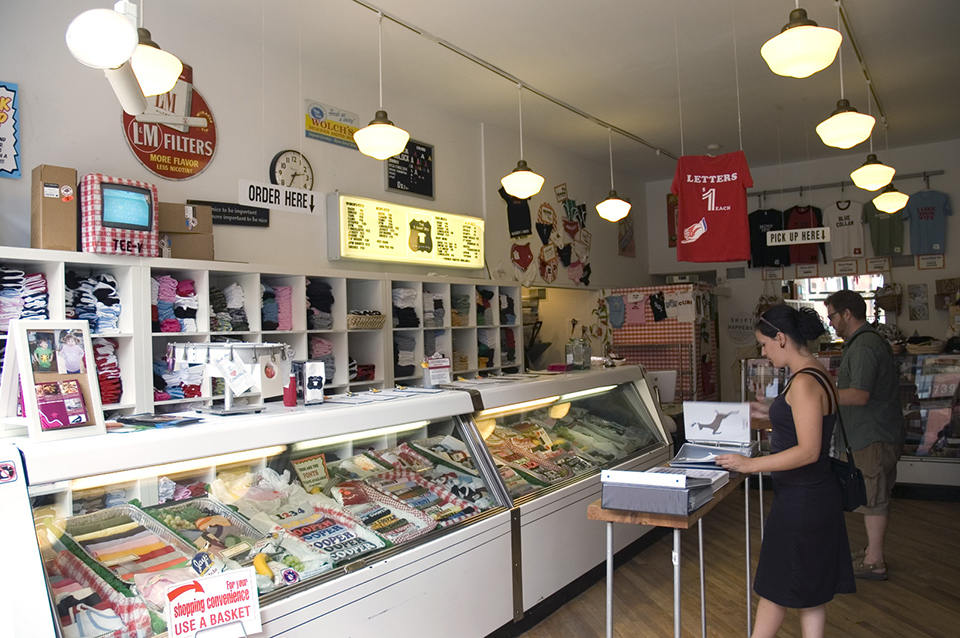
Vintage shops, chic boutiques and major retailers collide at the intersection of Milwaukee, Damen and North avenues. “We’ve got one of the largest concentrations of vintage stores, and we’ve got three different vinyl record stores in the neighborhood” Harmon says. A standout among the record shops is Reckless Records on Milwaukee Avenue. Founded in London, Reckless opened its first of three Chicago locations in 1988 and boasts a healthy selection of LPs, DVDs and CDs.
Time-honored sounds pair well with vintage threads in Wicker Park. At Kokorokoko, Jordache jeans, scrunchies and shoulder pads are given another day in the sun.
A few doors down, exposed brick and oriental rugs decorate Store B Vintage, owned and operated by David Ginople. The fashion-insider worked as a buyer for Bergdorf Goodman and Marshall Field and Co., and Store B Vintage melds his expertise with carefully curated high-end vintage wares alongside an abundant collection of decades-old barware, kitchenware and home decor.
More novelty resides at Mojo Spa, which creates more than 200 handmade bath and beauty products inspired by comfort foods and sweet treats—for example, soap that looks and smells identical to a cupcake—and spa services accompanied by cocktails.
At The T-Shirt Deli, a delicatessen display case is filled with rolled up t-shirts for decorating instead of cured meats. Innumerable decals and design options are available and each shirt is made to order. Finished shirts are wrapped in contact paper like a submarine sandwich and served with a bag of potato chips.
4. The grade-A eateries
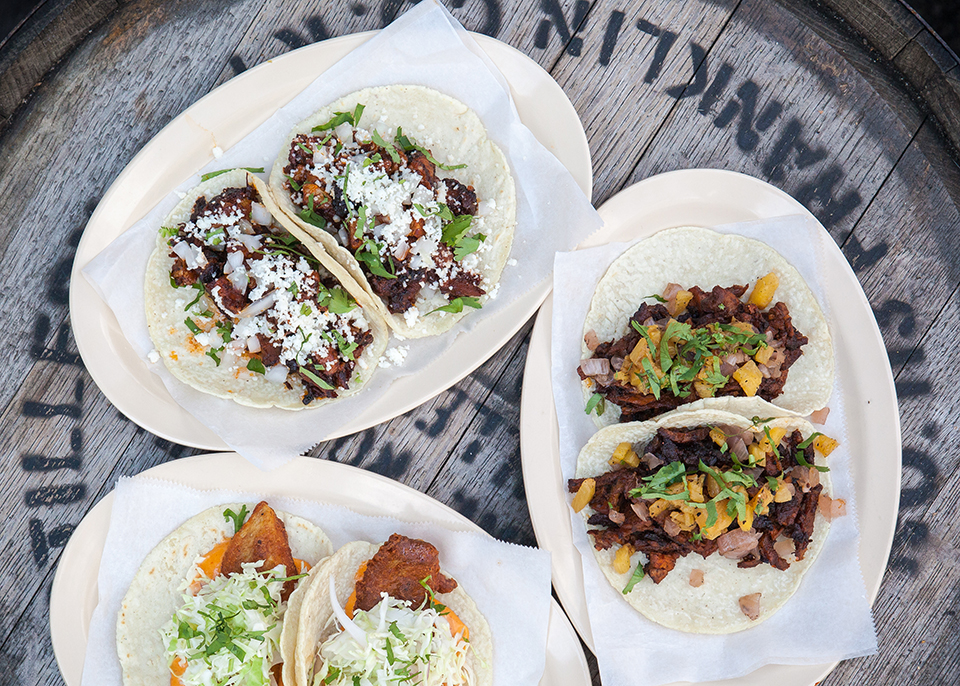
When exploring the area, you’ll soon discover experimentation and the community’s cultural diversity are best experienced on a plate. Traces of cultures from Wicker Park’s past meet in the kitchens of Michelin-star rated chefs and family-run establishments. Mexican, Italian, Middle Eastern, Costa Rican, Japanese, Indian, Thai, Argentine, Greek, Korean and the list goes on—it’s all represented.
Michelin-rated Executive Chef Paul Kahan is at the helm of Big Star, a Mexican street food-inspired eatery with a focus on bourbon and beer. Housed in a 1940s gas station, Big Star’s bartenders spin hand-selected country and rock ’n’ roll records on turntables behind the bar. As a community that treasures the arts, Big Star’s logo is a piece of art itself. The emblem is a nod to “Red Star,” a painting created by local Chicago artist and poet Tony Fitzpatrick, who created the image not only as a tribute to renowned writer and Wicker Park resident Nelson Algren, but also to represent the diverse working class people and immigrants of the neighborhood.
Taking the art of food to another level is the acclaimed upscale restaurant Schwa, a culinary conquistador and one of the most decorated restaurants in Chicago. Chef Michael Carlson’s menu is seasonally updated and features nine courses for $130.
Also reining in a parade of accolades is Trenchermen, a former Russian bathhouse turned restaurant. An equally strange space to dine is The Bedford, a reclaimed 1920s landmark bank with a lounge located in a vault, complete with copper safety deposit boxes and steel doors.
The Wicker Park of today may not be the Wicker Park of tomorrow, as gentrification has a tendency to eventually eradicate the very thing that made it special. But as this vintage locale looks to the future with a unique esteem for the past, the fact still remains: There has never been a better time to explore Wicker Park than the present.

